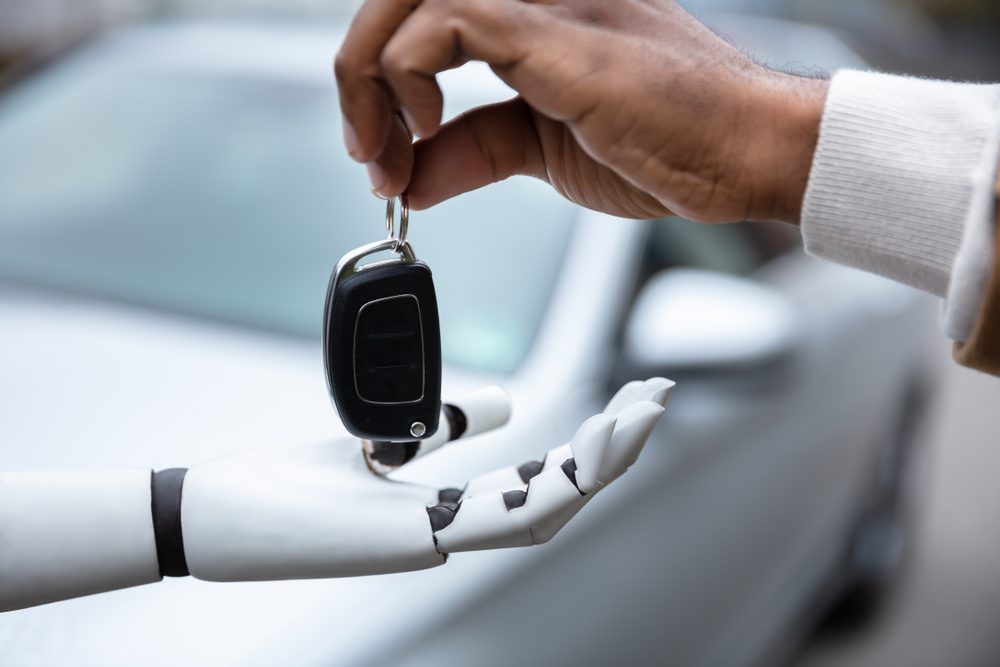Up to 95 percent of today’s shoppers go online to research vehicles. But they still want a personal connection. According to the Local Search Association, 61 percent of new and used vehicle shoppers call a dealership once they’ve completed their online research. This number is likely to grow due to the prevalence of smartphones and click-to-call buttons.
A phone system that leverages the power of artificial intelligence (AI) combined with trained human agents to transcribe conversations helps your dealership pinpoint and fix phone system problems. The result? You win more appointments and ultimately sell more cars.
This AI-human pairing is commonly used by huge technology companies including Microsoft and Amazon. You likely use Microsoft’s Skype or Amazon’s Alexa. These applications are AI-driven. They “learn” words and speech patterns so you get a better and more personalized customer experience every time you use them.
This pairing is necessary because AI isn’t perfect. It’s hard to transcribe human voices when the accent, tone, speed, and diction vary, or if there is background noise. This is a problem because with AI it’s critical to comprehend the words, establish context, and determine the speaker’s intent. These three elements are crucial to understand the information so the AI application can automate the next move.
 That’s where humans come in. We still need humans to help the applications analyze and then confirm, correct, or decline, the next action. This helps the computer “learn” and enrich its taxonomy for future analysis.
That’s where humans come in. We still need humans to help the applications analyze and then confirm, correct, or decline, the next action. This helps the computer “learn” and enrich its taxonomy for future analysis.
How does this AI and human pairing work in your dealership phone system? It helps you understand what is happening on your phones so you can fix problems before they cost you a sale.
Behind the scenes, this pairing analyzes calls to understand the content, what the customer wants, how the person answering the phone handles the call, and the outcome of the call. Did it end in a missed opportunity, an appointment, or a sale? All this information is sent to you in an easy-to-understand, real-time alert so you can improve your team’s phone huperformance.
As an example, let’s say you have one salesperson with a 40 percent phone appointment rate. Another salesperson is seriously lagging behind with only a 10 percent phone appointment rate. Why is there such a big discrepancy? An AI application backed by human agents will analyze speech patterns to determine why one salesperson is leaps and bounds ahead of another, and what you can do in terms of training to improve the results of the under-performer.
The best phone system providers use this AI and human pairing to capture customer data, automatically add the information to your CRM, transcribe calls, categorize follow-up, and send real-time reporting with details about what happened and how you can improve sales personnel and BDC phone performance. This allows you to save customer relationships before you lose a deal.
Before you choose a provider, do your homework. The best solutions have at least half a million data points behind them. Only with massive amounts of data can a solution create reasonable predications about customer intent and act on those predications.
They also have auto-only data sets. A provider working in multiple verticals may create generic data sets that limit capability and lead to a poor customer experience.
Detailed data analysis is also key. Any provider can gather and report data. You need a provider that does the data interpretation for you and delivers recipes to fix any problems.
Finally, don’t underestimate the importance of the human component. A good provider will have agents trained in the automotive space who listen to call recordings, fix transcription errors, and provide more context.
At a time when dealership calls are on the rise and there is fierce competition among dealerships to win customers, a phone system that combines AI and human agents can be the solution you need to deliver an exceptional customer experience, set more appointments, and win more sales.








